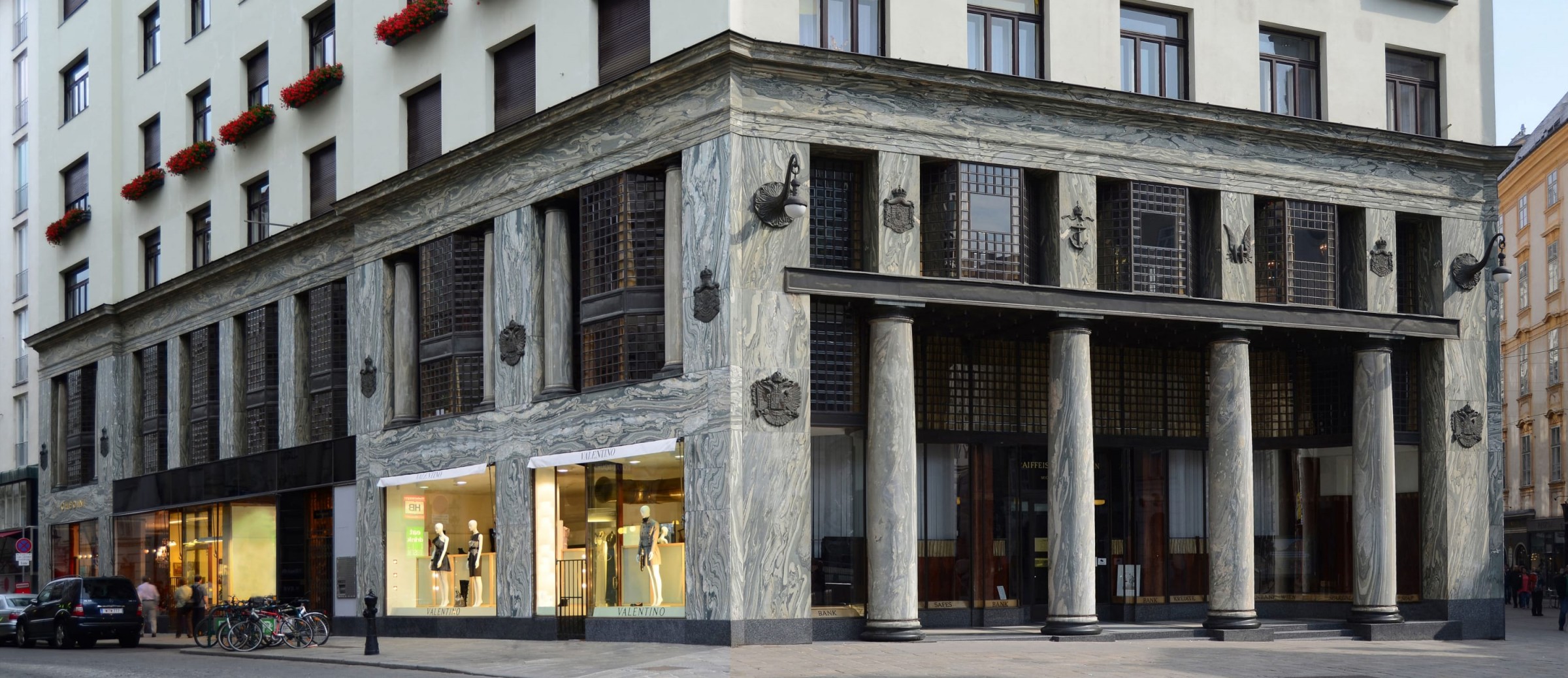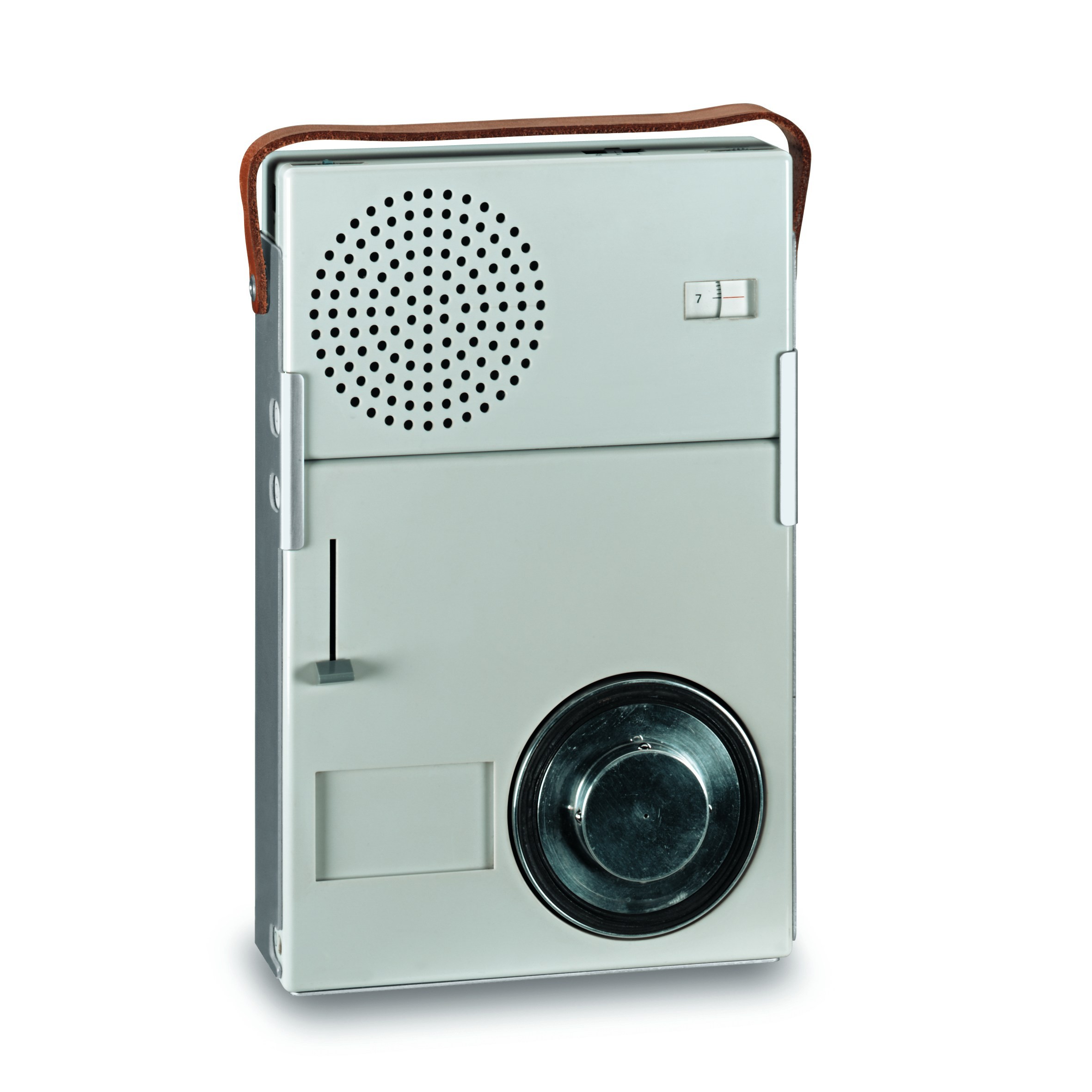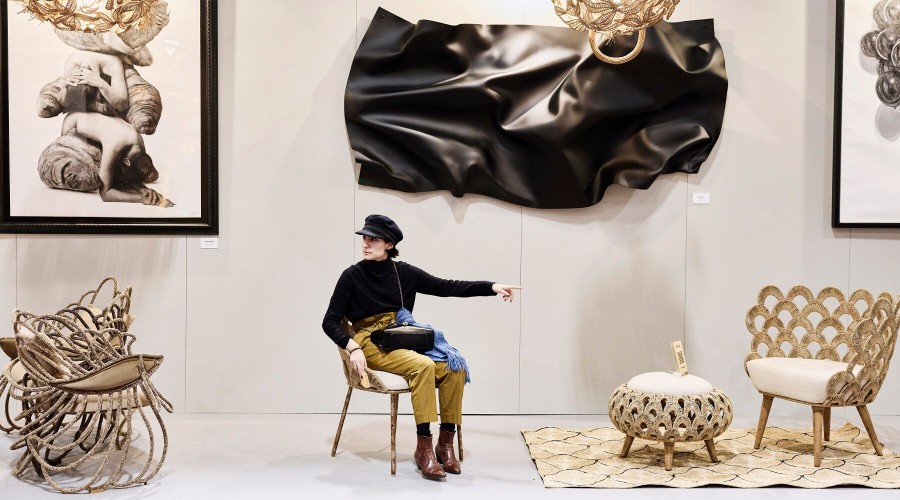Υπάρχει άραγε το Good Design;
DS.WRITER:
Christina Ioakeimidou
Κεντρική Εικόνα: Good Design exhibition (Nov 27, 1951–Jan 27, 1952, MoMa) | Πηγή εικόνας: moma.org
Το ερώτημα για το αν ο όρος design μπορεί να συνοδευτεί από τον προσδιορισμό «καλό», είναι κάτι που έχει συζητηθεί πολύ και από διαφορετικές σκοπιές. Πώς θα μπορούσε, άλλωστε, να μην καταστεί διχαστικό, από τη στιγμή που ο λεπτομερής σχεδιασμός οποιουδήποτε χρηστικού αντικειμένου, μόνο θετικός μπορεί να θεωρηθεί. Ωστόσο, για πολλούς, για να κατηγοριοποιηθεί ένα αντικείμενο ως προϊόν του Good Design, θα πρέπει να πληροί συγκεκριμένες προϋποθέσεις τόσο στον τομέα του σχεδιασμού του όσο και στη χρήση του. Το πρόβλημα, όμως, που προκύπτει από αυτή την άκρως αυστηρά αποδοσμένη και δογματική έννοια του όρου, είναι, εάν όλα τα αντικείμενα που χαρακτηρίζονται ως προϊόντα του good design, πράγματι ανταποκρίνονται στον σεβασμό και την ορθότητα που θα πρέπει να ακολουθούν τα υποτιθέμενα «καλά» σχεδιασμένα αντικείμενα.
Design ή Good Design;
Με τον όρο design εννοείται ο σχεδιασμός ή η διαδικασία - σκέψη για τη δημιουργία ενός μεμονωμένου ή μίας σειράς αντικειμένων, διαδραστικών συστημάτων, οχημάτων, κτηρίων κτλ. Το design, δηλαδή, εξ ορισμού στοχεύει στην απτή επίλυση των ουσιαστικότερων ή μη προβλημάτων που ταλανίζουν τους ανθρώπους στην καθημερινότητά τους, με σκοπό την καλυτέρευση της ζωής του χρήστη, που ούτως ή άλλως βρίσκεται στο επίκεντρο της σχεδιαστικής σκέψης. Έτσι, θα λέγαμε ότι το design είναι το κατεξοχήν προϊόν της ανθρώπινης εξέλιξης, αφού εξελίχθηκε μαζί με την ανάπτυξη μιας περισσότερο περίπλοκης ανθρώπινης σκέψης. Εξάλλου, ποιος θα μπορούσε να αρνηθεί το γεγονός, πως η ανακάλυψη του τροχού είναι η πρώτη και ίσως η σημαντικότερη επίτευξη του design, υποδηλώνοντας και την ακριβή σημασία του για τον σκοπό της ύπαρξής του; Δεν θα μπορούσε να καταστεί το προϊόν αυτής της ανακάλυψης ως μέρος του good design, αφού επέλυσε ένα πρόβλημα και βοήθησε στην ευκολότερη και ομαλότερη ροή της καθημερινότητας, συμβάλλοντας παράλληλα και στην περαιτέρω πολιτισμική ανάπτυξη; Μήπως, τελικά, όλα τα προϊόντα του design είναι εξ ορισμού ορθά κατασκευασμένα, έχοντας το καθένα τον δικό του σκοπό και στόχο;

Η εξέλιξη του τροχού | Πηγή εικόνας: muicenter.com
Η απάντηση στο παραπάνω ερώτημα είναι περίπλοκη, καθώς το καλό σχεδιαστικό αποτέλεσμα θα έπρεπε, κατά πολλούς, να είχε ορισμένα και αυστηρά αισθητικά χαρακτηριστικά, όπως αυτά διατυπώθηκαν στις αρχές του 20ού αιώνα. Η παραπάνω θεώρηση, ωστόσο, είναι κάπως προβληματική όπως αναφέρεται και από αρκετούς μελετητές -ανάμεσά τους οι Beatriz Colomina και Mark Wigley στο “are we Humans?”-, αφού το Good Design -κυρίως των δεκαετιών του 1960 και 1970- υποσχόταν όχι μόνο την κατασκευή ενός εύχρηστου αντικειμένου, αλλά και τη δημιουργία “καλύτερων” ανθρώπων. Προφανώς, ο προβληματισμός που τίθεται σε αυτό το σημείο, είναι ο κατά κόρον αυτοχαρακτηρισμός μιας πληθὠρας αντικειμένων ως προϊόντα του Good Design, και επουδενί δεν αναφέρεται στην προσπάθεια πολλών designers για μια ουσιαστική μεταστροφή του design με στόχο ένα καλύτερο μέλλον. Έτσι, δεν θα έπρεπε να μας βάζει σε σκέψεις η υπερτόνιση του όρου; Μήπως θα ήταν καλύτερα, αν αφήναμε το κάθε είδους προϊόν να μιλήσει μόνο του, σε βάθος χρόνου, έτσι ώστε να φανερώσει τις πραγματικές του αρετές, οι οποίες είναι άσκοπο να διαφημίζονται με κάθε είδους ταμπέλες;
Ιστορικά, οι απόψεις περί καλού σχεδιασμού υλοποιήθηκαν -αν και σε πρώιμο στάδιο- στα τέλη του 19ου αιώνα από κάποια μέλη του κινήματος Arts and Crafts, καθώς η λιτότητα και οι απέριττες σχεδιαστικές λεπτομέρειες άρχισαν να γίνονται τάση του τρόπου κατασκευής των διαφόρων αντικειμένων. Στο ίδιο καλλιτεχνικό μονοπάτι πορεύτηκε και ο Αυστριακός Adolf Loos, στα σχέδια του οποίου βρίσκουμε τις αρχές περί απουσίας της διακοσμητικότητας των επιφανειών και του περιορισμού του σχεδιασμού στα βασικά και χρηστικά στοιχεία του κτηρίου, όπου οι λείες, άχρωμες επιφάνειες δρουν καταλυτικά στον τρόπο θέασης και τη νοηματοδότηση της χρήσης του κτηρίου, σκεπτικό που είχε εκφραστεί και από τον Louis Sullivan με το περίφημο “form follows function”. Παρά, όμως, τη θετική έκβαση και εξέλιξη του Μοντερνισμού, η στροφή προς τη λιτότητα συνέβαλε στην εξουδετέρωση της όποιας προσωπικής ή πολιτισμικής διακοσμητικότητας των αντικειμένων και των κτιρίων, εξαφανίζοντας το οποιοδήποτε χαρακτηριστικό που προσέδιδε την ύπαρξη κάποιας κουλτούρας. Από αυτή τη στιγμή, θα λέγαμε, ότι η στροφή προς μία μαζική -κάπως άχρωμη πολιτισμικά- παραγωγή είναι γεγονός.

Looshaus, Βιέννη (Adolf Loos, 1911) | Πηγή εικόνας: divisare-res.cloudinary.com
Παράλληλα, ο Hermann Muthesius, στο “New Ornament and New Art” (1901), τάσσεται επίσης υπέρ του περιορισμού της διακόσμησης και της στροφής του design προς μια περισσότερο «καθαρή» μορφή του τελικού αποτελέσματος. Με τις διακηρύξεις αυτές, ο απλούστερος και καθαρότερος σχεδιασμός ξεκινάει να αποκτά μία έννοια ηθικής, ενώ η απομάκρυνση από το οτιδήποτε περιττό αρχίζει να παίρνει τη μορφή μιας «παιδαγωγικής» χρήσης του τελικού αποτελέσματος. Λίγα χρόνια αργότερα, και ο Le Corbusier στο βιβλίο τού 1923, “Vers une architecture” (“Toward an Architecture”), ταυτίζει τις λείες επιφάνειες -“smooth as sheet-iron,” όπως τις αναφέρει- με το αίσθημα της καθαρότητας, ενώ δίνει ως παράδειγμα (αν και κάπως εσφαλμένο) τη σχεδιαστική και διακοσμητική απλότητα του Παρθενώνα. Παρ' όλα αυτά, το "Good" Design θα προσπαθήσει μάταια να βρει την εννοιολόγησή του μετά τα μέσα του 20ού αιώνα.
Οι διαφορετικές έννοιες του Good Design
Αν με τον όρο Good Design εννοείται η προσπάθεια των σχεδιαστών να δημιουργήσουν «καλύτερα προϊόντα, για καλύτερους ανθρώπους», τότε θα πρέπει να αναλογιστούμε για πόσα αντικείμενα, κτήρια κ.α. έχει χρησιμοποιηθεί αυτός ο όρος. Θα μπορούσαν, άραγε, να λογιστούν ως μέρος του Good Design οι κοινωνικές κατοικίες της Ε.Σ.Σ.Δ., αφού είχαν ως κύριο εκπαιδευτικό τους στόχο -κατά τον Νικίτα Χρουστσόφ, κύριο εμπνευστή τους- να δημιουργήσουν τον τέλειο και ηθικό, κατά τα πρότυπα του καθεστώτος, άνθρωπο; Η απάντηση δεν είναι συγκεκριμένη, καθώς, αν και σαν κατασκευές ήταν κοντά στα πρότυπα του λιτού σχεδιασμού και της λειτουργικότητας της κάτοψης, εξυπηρετώντας φαινομενικά τις ανάγκες του ενοίκου, δεν φαίνεται να έχουν σταθερή αντοχή στον χρόνο, λόγω της ευτελούς, πολλές φορές, κατασκευής τους, ενώ η παντελής απουσία του προσωπικού στοιχείου -λόγω των προσπαθειών «εκπαίδευσης» των πολιτών για την προσέγγιση της πλήρους ισότητας- οδηγεί σε μία απολύτως συστημική προσέγγιση του σχεδιασμού.

Khrushchyovkas σήμερα στη Β. Σιβηρία (Κοινωνική κατοίκηση) | Πηγή εικόνας: upload.wikimedia.org
Τη δική του αναλυτική εκδοχή του ορισμού τού Good Design έχει δώσει ο Dieter Rams με τον τονισμό των δέκα αρχών, βάσει των οποίων ένα αντικείμενο μπορεί να ανήκει στο καλό design. Επιγραμματικά, τα δέκα σημεία του Rams είναι: καινοτομία, χρηστικότητα, αισθητικό αποτέλεσμα, κατανόηση και ειλικρίνεια προϊόντος, διακριτικότητα, μεγάλη διάρκεια αντοχής, πολύ προσεκτικός σχεδιασμός, φιλικό προς το περιβάλλον και όσο το δυνατόν λιγότερη σχεδιαστική προσπάθεια. Κινούμενος και ο ίδιος σε αυτά τα πρότυπα, πράγματι η δουλειά του -κυρίως στα προϊόντα που σχεδιάστηκαν για την Braun- είναι στα πλαίσια του δικού του, για ακόμα μία φορά, περιορισμένου ορισμού του Good Design, παραπέμποντας και στη δουλειά της σχολής του Bauhaus, όπου το design και ο βιομηχανικός σχεδιασμός ήταν ο πυρήνας της καλλιτεχνικής έμπνευσης.

Dieter Rams | Πηγή εικόνας: styleformiles.net
Εντούτοις, και σε αυτή την περίπτωση, ο ορισμός χρησιμοποιείται και επεξηγείται και σχεδιαστικά με την υιοθέτηση των δέκα αρχών. Επιπλέον, για ακόμα μία φορά, εξαιρούνται από το πρότυπο του καλού σχεδιαστικού αποτελέσματος τα αντικείμενα που κατασκευάστηκαν, μην πληρώντας το «κουτάκι»της λειτουργικότητας ή της απλότητας. Θα μπορούσε η συνεχής υπενθύμιση του πόσο σημαντικός και απαραίτητος είναι ο «καλός» σχεδιασμός, καθώς και οι επαναλαμβανόμενες προσπάθειες για να τον επιτύχουν, να οδηγήσουν πράγματι σε κάτι καλύτερο;
Περισσότερη σκέψη και λιγότεροι χαρακτηρισμοί
Ζώντας στην εποχή που όλα έχουν ρευστές σημασίες και εννοιολογίες, θα ήταν παρωχημένο να θεωρούμε ότι υπάρχει το «καλό» και το «κακό» design. Εντούτοις, θέτοντας περιορισμούς στον σχεδιασμό και τοποθετώντας κάτω από την ομπρέλα τού "Good" Design προϊόντα, κυρίως για εμπορικούς σκοπούς -ποιος, άλλωστε, δεν θα ήθελε να αγοράσει ένα αντικείμενο που υπόσχεται στον καταναλωτή ότι είναι ηθικό;-, η αξία του όρου χάνεται, οδηγώντας σε παρανοήσεις ή και αποπροσανατολισμό του κλάδου, ο οποίος, όπως είδαμε από τον πυρήνα του, έχει στόχο τον άνθρωπο και την καλυτέρευση της ζωής του. Ούτως ή άλλως, όλα τα αντικείμενα, είτε προορίζονται για χρήση είτε για διακόσμηση, έχουν μία συγκεκριμένη χρήση, η οποία μπορεί να είναι η λειτουργικότητα, η διακοσμητικότητα, ή ακόμα και η προβολή μίας καλλιτεχνικής ελευθεριότητας. Ποιος θα μπορούσε να αρνηθεί ότι, για παράδειγμα, ένα έργο τέχνης έχει μία χρηστικότητα, η οποία φανερώνεται μόνο μέσα από την ένταξή του στο πολισμικό του πλαίσιο;
Ίσως, θα πρέπει να αρχίσουμε να σκεφτόμαστε και να αφουγκραζόμαστε τις ανάγκες της σύγχρονης εποχής που όλο και μεγαλώνουν, προσαρμόζοντας τον σχεδιασμό και την παραγωγή προϊόντων που εντάσσονται σε ένα ευρύ φάσμα του πολιτισμικού πλαισίου, συμπεριλαμβανομένων των κοινωνικών, οικολογικών και πολιτισμικών παραμέτρων που χαρακτηρίζουν την πολυπλοκότητα των σημερινών καθημερινών σχέσεων μεταξύ ανθρώπων και αντικειμένων. Μόνο αυτό το design που σέβεται όλες τις εκφάνσεις της ζωής θα μπορέσει να λογιστεί ως ηθικό, και κατ' επέκταση ως Good Design.
Πηγές / Περαιτέρω ανάγνωση
Justin McGuirk (2009). Braun and beauty: Dieter Rams comes to London's Design Museum. Aπό: theguardian.com.
Good Design. Από: interaction-design.org.
Τhe Design Museum. What is "Good" Design? A quick look at Dieter Rams' Ten Principles. Από: designmuseum.org.
What is design?. Από: strate.education.
Το βιβλίο των Beatriz Colomina & Mark Wigley στο: fsv.cuni.cz.
Sammartino, Annemarie. (2017). The New Socialist Man in the Plattenbau: The East German Housing Program and the Development of the Socialist Way of Life. Journal of Urban History. 44. 009614421771023. 10.1177/0096144217710231.
Παρουσίαση του προγράμματος κοινωνικής κατοίκησης από τον Ν. Χρουστσόφ στο: Khrushchev Speaks: Selected Speeches, Articles, and Press Conferences, 1949-1961.





.jpg)


.jpeg)